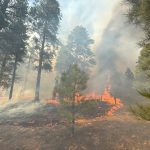
Major problems show need for partnerships
WINDOW ROCK
When the major issue is alcohol and substance abuse on the Navajo Nation, then it’s just not a police problem.
In the Navajo Nation Police’s first-ever commissioned assessment and strategic plan, which is available to the public, the mortality rate and the dominate leading cause of deaths on Navajo Nation all lead to alcohol and substance abuse.
“The biggest problem on the Navajo Nation is alcohol abuse and injuries that come with it,” said Chief Phillip Francisco in an interview with the Times.
Francisco uses the assessment that he unveiled to the public two weeks ago, which took 18 months to complete.
A 2009 report by the Navajo Epidemiology Center hypothesized that males have a higher mortality (death) rate due to alcoholism. Mortality rates point to unintentional injury as the leading cause of death for Navajo males.
At the same time, male mortality rates far surpass females for diabetes, suicide, alcohol dependence syndrome, assault, hypertensive disease and chronic obstruction pulmonary disease (COPD)—a type of heart disease.
The leading causes of unintentional injury death for Navajo males are motor vehicle crashes, pedestrian falls, unintentional alcohol poisoning and exposure to cold. All can be linked to alcohol.
“As you can see, we need to concentrate on what is really plaguing our people and causing more deaths and that is unintentional injury caused by alcohol,” said Francisco.
“It solidifies my position from the beginning that one of our biggest issues we have to combat all of the public issues on Navajo Nation is our alcohol and substance abuse issue,” he said, “which is really causing our workload for the police department.”
Unintentional injuries, which account for nearly one in five Navajo deaths, claim a highly disproportionate loss of potential life when compared to all other causes of death, indicating that unintentional injury deaths occur at younger ages than any other cause of death.
Unintentional injuries are the leading cause of death on Navajo for ages 10-59 years old.
For males, unintentional injury accounts for 24.4% of all deaths and for females 11.5%. Note in the information below that motor vehicles are the leading cause of death, followed by pedestrian deaths, and accidental poisoning by an exposure to alcohol, according to the assessment.
• Updated 2010-2013 mortality statistics using only data on Navajo in New Mexico remain consistent with the findings of the profile. Further investigation of the 42 leading cause of intentional injury deaths, motor vehicle crashes, is reported in “A Description of Fatal Car Crashes Occurring Within the Navajo Nation and its Border Towns, 2005-2014.”
• Select findings include: Crashes were more likely to have occurred between 4 p.m. and midnight than any other time period.
Three in four crashes (75.8%) involved only one car; nearly 98% (of drivers) had no previously recorded accidents; 5.7% had one or more previous DWI convictions; and 8.6% had one or more previous speeding convictions; 15.1% of the crashes occurred under the influence of alcohol; 64.3% of the people in the crashes were male; males were 1.33 times more likely to be killed in these crashes and 1.252 times more likely to be severely injured than females; etc.
• The single most influential variable for pedestrian fatality was police reported alcohol involvement, indicating that partnerships with alcohol prevention and behavioral health programs should be strengthened.
Francisco said 55% of the arrests made are public intoxication, which means a lot of time is held up just on these types of arrests alone and it impacts the ability for officers to respond to other calls.
“There needs to be something done pretty quickly to address alcohol and substance abuse on Navajo Nation,” said Francisco. “It’s not something that the police department can do. It’s going to take social services, Indian Health Service, courts, peacemaking – all these will play a role in it to try to curve the habitual abusers of alcohol and drugs.”
Also stated in the assessment is Capt. Jeffrey Sharp of the Arizona State Police, an external expert observer and partner with NPD, who sees that “most calls are domestic and alcohol related. Alcohol, drugs and domestic violence are very bad. The DV incidents are very violent.”
Annual reporting to the FBI indicates that violent crime rates have fallen by 48% over the past 25 years. However, this same data suggests that violent crime has been on the rise on the Nation. Between 2010-2016, over 44.1% of calls for service involved violence, and alcohol underlies almost all of this violent crime.
Navajo Criminal Investigations responds to approximately 30 to 50 homicides per year within the Nation’s boundaries, which represents a homicide rate well above the national average (20–33 homicides per 100,000 people compared to 6-13 per 100,000 nationally). Based on the most recent Census data, the homicide rate on the Navajo Nation is four times the national average.
Although the consultants who developed the assessment recommends 775 NPD personnel to meet the Navajo Nation needs, they realize this would be difficult budget wise. So a lesser number of 500 is the next suggestion, with 300 serving as patrol officers, and 200 serving as command and support personnel.
Aside from more officers and needing social services, IHS, Navajo courts and other entities to come together and work on the alcohol and substance abuse issues plaguing Navajo, Francisco said this assessment shows Council delegates where resources are needed in order to combat the crime issues on Navajo.
“This assessment guides them where they need to direct their resources and money,” said Francisco. “Rather than wanting to build substations, or addressing certain things in certain areas, they need to spend more time discussing the bigger things like alcohol.
“How do we fund the program to get our people out of the cycle of alcohol abuse? How do we get them rehabilitated to get back to work, not cause these problems and not destroy themselves?”



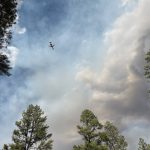
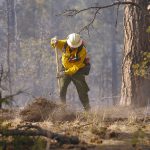
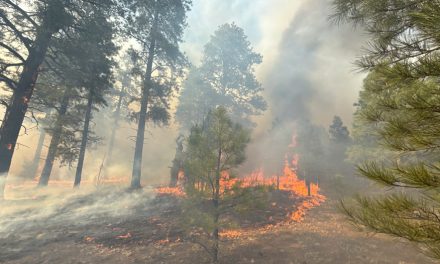
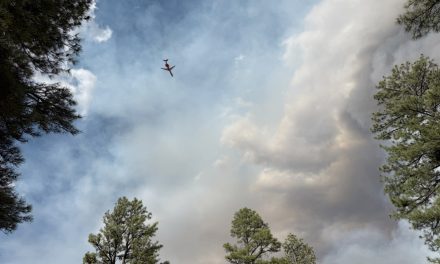



 Highway 264,
Highway 264, I-40, WB @ Winslow
I-40, WB @ Winslow